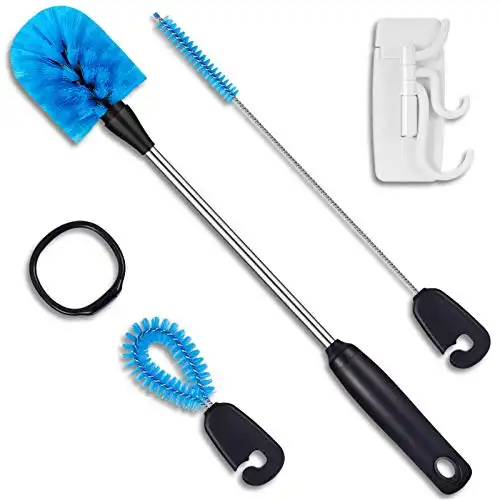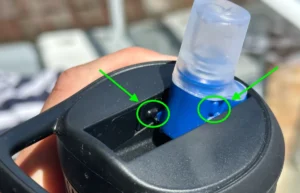Nalgene lids are much easier to clean than the lids of most other water bottles, thanks to their simple, gasketless design.
But still, if you don’t wash the cap properly, your bottle can grow mold and make you sick. So how exactly should you wash your Nalgene cap?
To properly clean a Nalgene Bottle lid, check for mold (and kill it by scrubbing with a mixture of baking soda and dish soap), rinse the cap under hot running water, scrub all surfaces using dish soap and a small bottle cleaning brush, rinse away any remaining detergent, and let the cap air dry.
By washing your Nalgene lid thoroughly after every use (or at least once every few days), you can prevent mold, kill any that does grow, and prevent yourself from getting sick.
You also want to wash the bottle itself and for that we have a full guide on how to properly clean your Nalgene water bottle.
1. Check For Mold
Remove the lid and check for mold, paying particular attention to the cracks and crevices under the cap and the threads of both the cap and bottle.
Mold is pretty easy to spot on the classic blue lids, but may be harder to see on black lids. Give the bottle a smell test too, you can usually smell mold well before it’s visible.
If you see or smell mold, refer to the section below, “How To Remove Mold From Your Nalgene Lid.”
Otherwise continue on to step 2.
2. Rinse The Lid (And Soak If Needed)
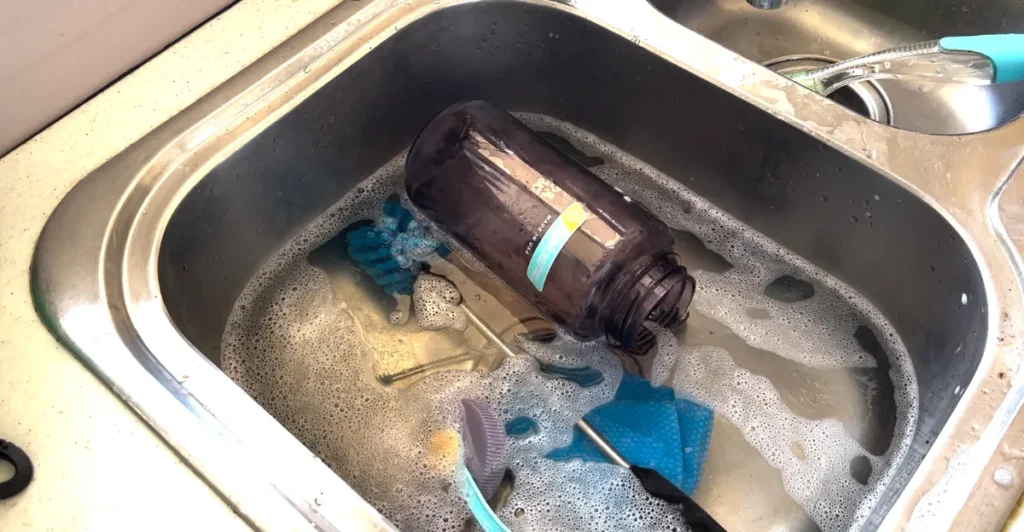
Give the lid a quick rinse under hot running water. Cold water works well enough if you prefer, but is less effective at removing stuck-on food and drink.
If there’s anything that won’t rinse off easily, like dried-on smoothie or coffee residue, let the cap soak in hot water for 15 or 20 minutes.
Whatever is caked on should soften enough to rinse off after soaking. If anything is particularly stubborn, white vinegar or a squirt of dish soap while soaking may help.
3. Scrub Thoroughly
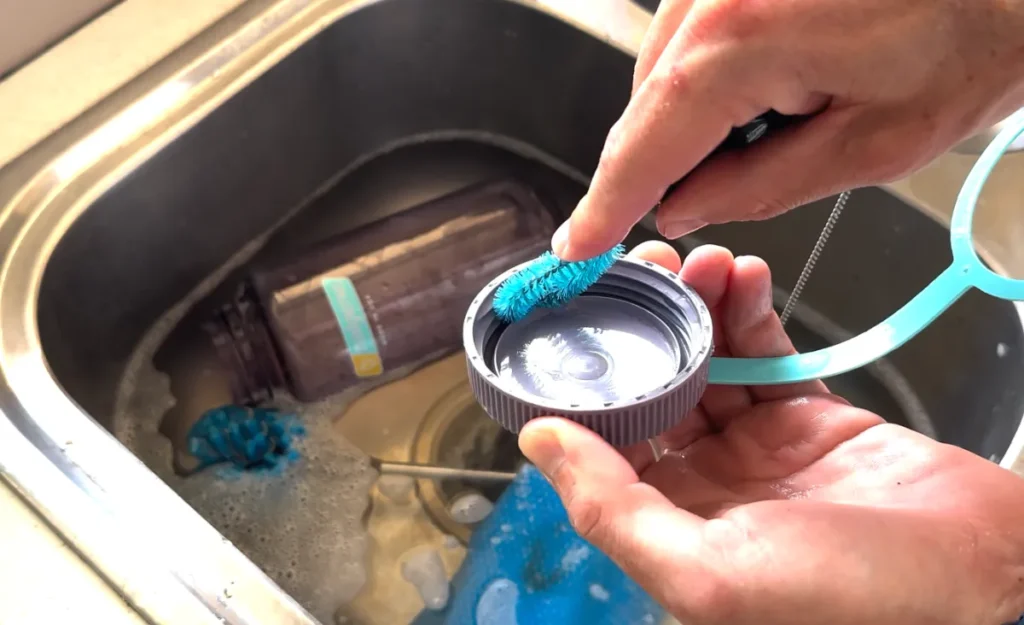
After rinsing, it’s time to thoroughly scrub every surface of the lid with warm water and detergent. Or, if you prefer something more natural, white vinegar or baking soda make reasonable alternatives.
Be sure to hit every surface as well as possible. A bottle cleaning kit can help reach those tighter spaces (especially if you have an OTF, ATB, or MultiDrink cap).
I personally use and recommend this bottle brush cleaning kit from Amazon. It's affordable and the bottle brush has a long handle and good shape for cleaning Nalgene bottles. But the smaller brush has proved perfect for cleaning my Nalgene lids.
Three tools in one. Includes a long bottle brush, straw brush and detail cleaner (great for cleaning inside lid gaskets). Comes with organizer ring and storage hook,
4. Rinse And Air Dry
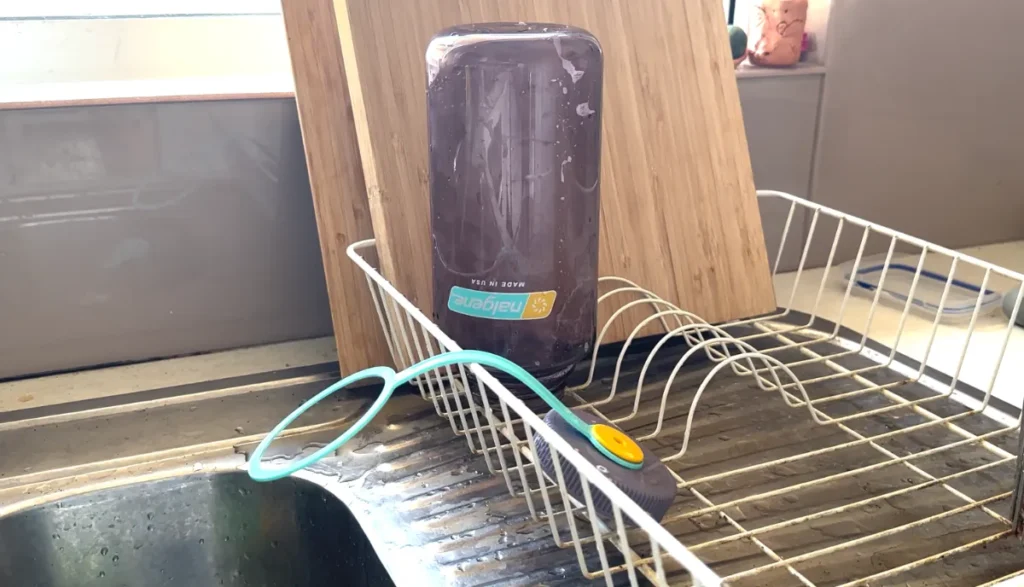
Rinse the cap again under hot running water to remove any remaining detergent or cleaner.
Air dry the cap upside down and slightly angled on a drying rack. Air drying is preferred to drying with a dishcloth or hand towel because they often harbor bacteria and don't tend to remove all the moisture anyway.
5. Store Your Bottle With The Lid Off

One of the mistakes I made early on is I would store my bottles with the lid on.
If you do this and there is any moisture left in the bottle or the lid itself then it can allow mold to grow and your bottle ends up smelling really funky when you open it and go to drink from it.
By storing your lid off the bottle it allows both the lid and the bottle to be dried (and stay dry) from the air.
The good thing about the Nalgene bottles is the lids can be attached to the bottles anyway so you won't lose them and they will always be together.
If your Nalgene lid strap has broken then click here for some DIY Nalgene lid strap fixes which are even stronger than the regular lid strap.
Hot To Remove Mold From Your Nalgene Lid
Because the underside of a Nalgene lid is damp and dark, it makes the perfect breeding ground for mold and mildew.
While most types of mold that grow in water bottles are harmless and easily killed by stomach acid, some types can make you sick when ingested.
Black mold is particularly worrying because it can cause problems like nausea, cramping, diarrhea, respiratory problems, and infections.
The good news is that classic Nalgene lids aren’t especially prone to growing mold, thanks to their simple design with no gasket — though I have found mold growing beside the small lip near the edge of the cap more than a few times.
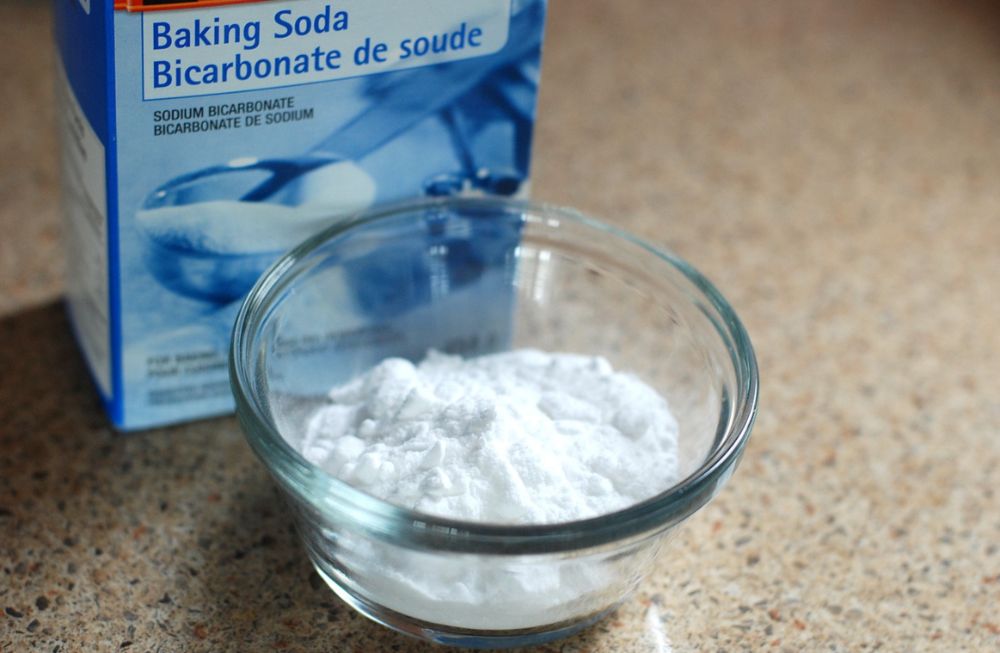
To kill and get rid of mold on your Nalgene lid:
- Mix a tablespoon or two of baking soda with equal parts dish soap.
- Using a toothbrush or bottle cleaning kit to get into the tight spaces, scrub the entire cap with the baking soda mixture. Focus on areas with visible mold, but make sure to scrub all surfaces of the cap.
- Rinse the cap and repeat the scrubbing process again if necessary.
- Once you’re sure all the mold is removed, wash the cap as normal.
Keep in mind, if there was mold on the lid, there’s likely mold in the bottle itself too. Click here to learn how to remove mold and bad smells from your Nalgene bottle.
The interior of your Nalgene can be scrubbed with a baking soda mixture and bottle brush or soaked in hot water and a couple tablespoons of baking soda for a few hours.
Are Nalgene Lids Dishwasher Safe?
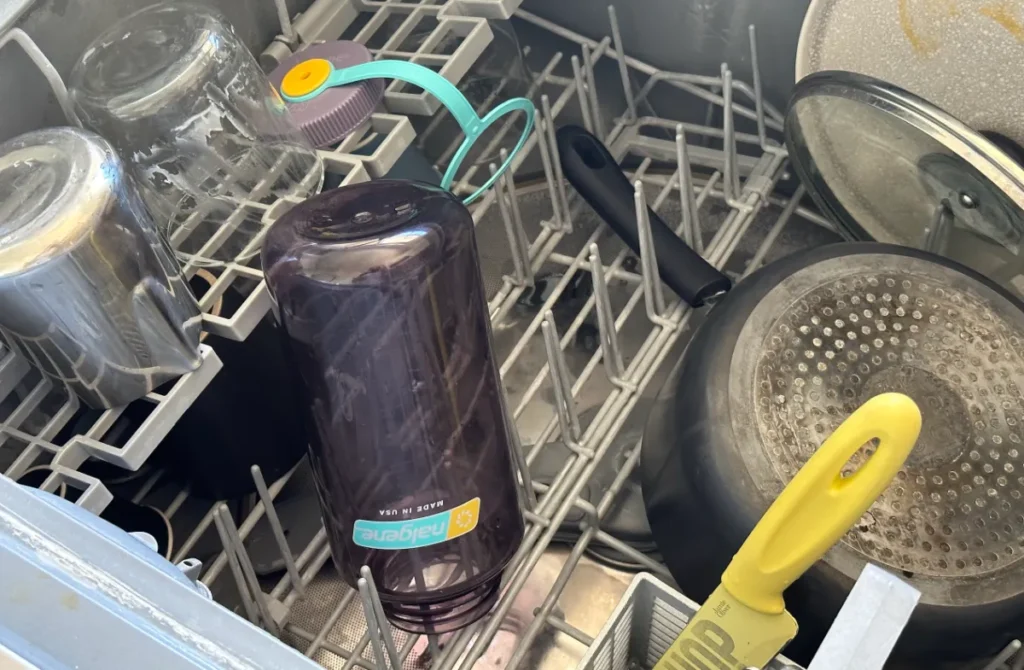
Nalgene lids are dishwasher safe on the top rack, l away from the heating element — though I generally prefer hand washing for two reasons.
For starters, there are studies that show that plastic worn down by repeated machine washings leach more chemicals. Though this is less of an issue for the lid than the bottle itself, I’d rather be safe than sorry.
Second, Nalgene caps are made of LDPE and polypropylene — both of which are more heat-sensitive than the bottles themselves.
Hand washing will help extend the length of your Nalgene’s lid.

